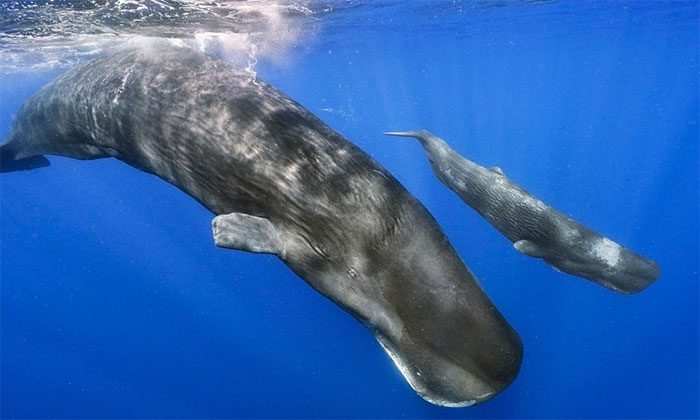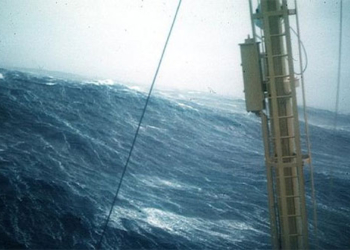Scientists from the CETI project witnessed a young sperm whale surfacing after being born, guided by the entire pod at its arrival.
The last time scientists observed a sperm whale giving birth was in 1986, and there are no audio or video recordings of the event. The new footage capturing the behavior of sperm whales during childbirth may provide fresh insights for researchers. During a routine observation off the coast of Dominica in July 2023, Shane Gero, the leader of the CETI project, witnessed this extremely rare birth. Equipped with advanced technology, they collected direct images of the event for research, according to National Geographic.
The birth process of a young sperm whale. (Video: CETI).
Gero was monitoring a mother sperm whale named Rounder. She has an older calf named Accra. By following the calls of the sperm whales, the research team encountered 11 sperm whales lined up, facing one direction, trying to remain silent during the birthing process.
The team set out on two boats equipped with special microphones suspended underwater. They deployed two drones to film the whales for 10-15 minutes. Initially confused by the sounds from the pod, they realized that marine mammals can sometimes band together to assist one another. However, this time, a small calf emerged, raising its head above the surface. The microphones recorded the chorus of the sperm whales in the pod, as they lifted the calf to the surface to help it breathe and keep it buoyant. The calf’s tail was still curled up like it was in the womb, making it difficult for it to swim properly.
The scientists are unsure of the calf’s sex, but Gero hopes it is female. The team monitored the pod helping the calf for several hours to ensure it could maintain its balance. Sperm whales have one of the longest gestation periods in the animal kingdom (18 months) and typically give birth to only one calf at a time.

An extremely rare birth of a sperm whale.
With males reaching lengths of up to 18 meters, sperm whales remain a mysterious species. It wasn’t until 1957 that researchers discovered sperm whales could produce sound. Currently, scientists in the CETI project are analyzing recordings of the pod’s calls during the birth. This type of information is essential for better understanding this species, which is vulnerable due to ocean pollution and ship strikes.
By capturing sounds and analyzing them, the CETI project aims to fully decode the language of sperm whales. Gero and his team primarily focus their research around Dominica, home to an estimated 35 families of sperm whales. There are fewer than 500 individuals in the Eastern Caribbean, mainly adult females accompanied by a few calves.





















































